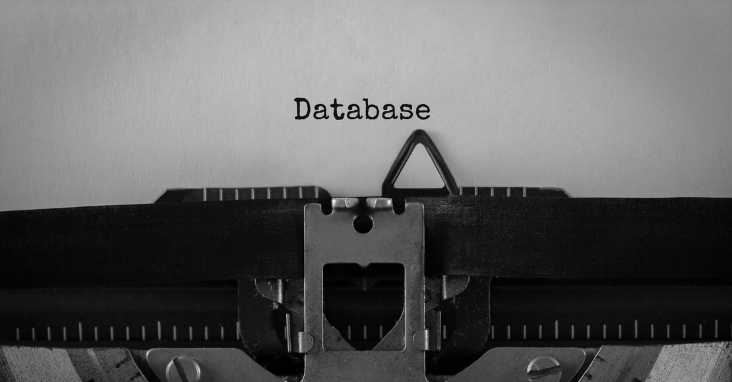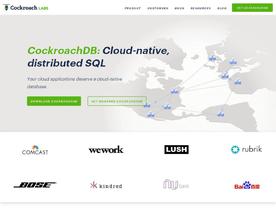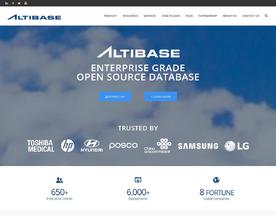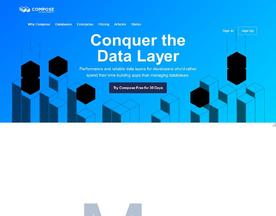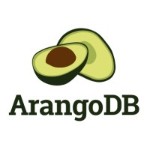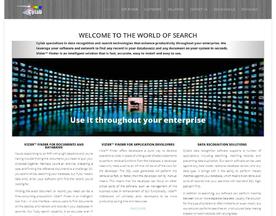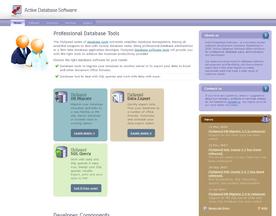Today, we’re diving into a topic that’s pivotal in the tech world, yet often flies under the radar: databases.
What are the different types of databases out there to manage data from? Types of databases include relational, NoSQL, and cloud, each serving different data management needs in today’s digital world.

Welcome to the fascinating world of databases! If you’re reading this, chances are you’re interested in understanding the different types of databases and why they’re so crucial in our digital landscape. So, let’s embark on this journey together, unraveling the complexities of databases in a way that’s both fun and informative.
The Importance of Databases in the Digital Age
Picture this: every time you browse the internet, shop online, or scroll through social media, you’re interacting with databases. These databases are the unsung heroes of the digital age, quietly working behind the scenes to store, organize, and retrieve data. They’re the backbone of websites, applications, and even the devices we use daily.
But why are databases so important? Well, in our increasingly data-driven world, efficiently managing data is crucial. Whether it’s a small business keeping track of inventory or a large corporation analyzing customer behavior, databases make it possible to handle vast amounts of information quickly and accurately.
The Evolution of Databases
Databases have come a long way since their inception. In the early days graph databases, data was stored in simple file systems. This method was fine for small amounts of data but quickly became unwieldy as data volumes grew. Enter the relational database, a game-changer in the world of data management. Pioneered by Edgar F. Codd in the 1970s, relational databases allowed for data to be stored in table formats, making it easier to retrieve and manipulate.
But the evolution didn’t stop there. As the internet exploded and data generation skyrocketed, new challenges emerged. The relational model wasn’t always the best fit for the unstructured data of the web, leading to the rise of NoSQL databases. These databases were designed to handle large volumes of diverse data types and were more flexible in terms of data modeling.
Why Understanding Database Types is Essential
Now, you might be thinking, “Okay, databases are important, but why do I need to know about different types?” That’s a great question! Different types of databases are like different tools in a toolbox. Just as you wouldn’t use a hammer to screw in a bolt, you wouldn’t use a relational database for a task better suited to a NoSQL database.
Understanding the strengths and limitations of each database type helps in making informed decisions about which database to use for what purpose. For instance, if you’re working with structured data and need complex querying, a relational database might be your go-to. But if you’re dealing with massive volumes of unstructured data, a NoSQL database could be more up your alley.
Types of Databases: A Closer Look
As we delve deeper into the types of databases, we’ll explore the world of relational databases like MySQL and PostgreSQL, which are fantastic for structured data and complex queries. We’ll also dive into the realm of NoSQL databases, including MongoDB and Cassandra, known for their scalability and flexibility with unstructured data. And let’s not forget cloud databases like Amazon RDS or Google Cloud SQL, offering the benefits of cloud computing such as scalability and accessibility.
Object-oriented databases integrate object-oriented programming with database technology, providing a more seamless and intuitive way to store, retrieve, and manage data structured as objects, making them ideal for applications dealing with complex data relationships and custom data types.
Document databases store data in a document-oriented format, typically JSON or XML, offering a flexible schema for handling semi-structured data, making them perfect for applications that require agile development and the ability to handle varied data types. Graph databases are designed to store and navigate relationships efficiently, using nodes, edges, and properties to represent and store data, ideal for complex hierarchies and networks like social media, recommendation engines, and network analysis.
Key Points:
- Object oriented database are integral to the functioning of digital systems, handling everything from user data to business operations.
- The evolution of databases from simple file systems to complex relational and NoSQL systems reflects the growing demands of the digital age.
- Understanding different types of databases is crucial for selecting the right tool for specific data management needs.
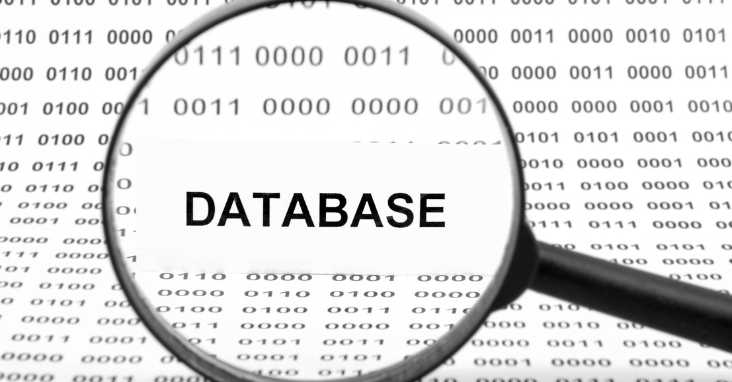
The Impact of Database Choice on Business and Technology
In this section, we’ll explore how the choice of a database can profoundly impact both business strategies and technological advancements. Understanding this can help you make more informed decisions, whether you’re developing a new app, managing a business, or just aiming to stay updated in the tech world.
Aligning Database Selection with Business Goals
Every business has unique needs and goals, and the database technology it employs should align with these objectives. For example, a startup focused on rapid growth might prioritize scalability and flexibility, making NoSQL databases like MongoDB an attractive choice. On the other hand, a financial institution handling complex transactions and requiring strict data integrity might lean towards relational databases like Oracle or MySQL.
Database Choice and Technological Innovation
The choice of database can also drive innovation. Take, for instance, big data analytics. Technologies like Hadoop, often used alongside NoSQL non relational databases now, have revolutionized how we process and analyze vast amounts of data. This synergy between database types and emerging technologies is a driving force in creating new solutions and capabilities in various industries.
Databases and User Experience
The type of database also plays a critical role in user experience. For applications requiring real-time data processing, such as online gaming or stock trading platforms, databases with high throughput and low latency, like in-memory databases (e.g., Redis), are crucial. A poor choice in database can lead to slower response times and a frustrating user experience.
Future-Proofing with the Right Database
In our rapidly evolving tech landscape, choosing a database that not only meets current needs but also accommodates future trends is vital. With the advent of technologies like AI and IoT, databases capable of handling real-time analytics and large-scale data processing are becoming increasingly important.
Key Points:
- The choice of a database should align with a business’s specific needs and goals, such as scalability or data integrity.
- Database selection can influence and drive technological innovation, especially in areas like big data analytics.
- The type of database directly affects user experience, with different databases offering varying performance levels.
- Future-proofing technology strategy involves choosing databases that can adapt to emerging trends like AI and IoT.

Getting Started with Databases: Tips and Best Practices
Embarking on your database journey can seem daunting at first. Whether you’re a beginner or looking to expand your skills, this section aims to provide some practical guidance on how to get started and excel in the world of databases.
Starting with Database Fundamentals
Before diving into specific database types, it’s crucial to understand the basics. Learn the fundamental concepts like data models, schemas, queries, and transactions. Online courses, tutorials, and resources like W3Schools or Khan Academy can be excellent starting points.
Choosing the Right Database
Selecting the right database for your project or organization is a critical decision. Consider factors like the nature and size of your data, scalability needs, and the specific use case. It’s often beneficial to start with simpler solutions and evolve as your needs grow.
Best Practices in Database Management
Data Integrity and Consistency: Always prioritize maintaining the accuracy and consistency of your data. This means implementing constraints, using transactions, and regularly checking for data anomalies.
Backup and Recovery Plans: Regular backups are essential. Ensure you have a robust backup and recovery strategy to protect your data from loss or corruption.
Security Measures: With the rising concerns over data breaches, implementing strong security measures is non-negotiable. This includes using encryption, access controls, and keeping your database software updated.
Performance Optimization: As your database grows, performance can become an issue. Regularly monitor and optimize your database’s performance through indexing, query optimization, and appropriate scaling strategies.
Staying Updated: The database technology landscape is constantly evolving. Keep yourself updated with the latest trends, updates, and best practices.
Learning through Real-World Applications
Hands-on experience is invaluable. Engage in projects that allow you to apply your database knowledge. This could be anything from personal projects, contributing to open-source initiatives, or undertaking specific database-related tasks at work.
Key Points:
- Start by mastering the fundamentals of database technology.
- Carefully choose the right database based on your specific needs and scalability requirements.
- Adhere to best practices in database management, focusing on data integrity, security, and performance optimization.
- Gain practical experience through real-world applications and projects.

Software Tools
When dealing with databases, certain tools come in handy. Let’s check out a few:
This is a unified visual tool for database architects, developers, and DBAs. It provides data modeling, SQL development, and comprehensive administration centralized database tools.
If you’re working with MongoDB, this is the GUI for you. It allows you to visualize and manipulate your MongoDB data.
Microsoft SQL Server Management Studio
This tool provides an integrated environment for managing any SQL infrastructure, from SQL Server to Azure SQL Database.
Key Points:
- Tools like MySQL Workbench, MongoDB Compass, and Microsoft SQL Server Management Studio are essential for database management.
- Each tool offers unique features suitable for specific types of databases.

FAQ
What is a Relational Database?
A relational database is a type of database that stores and provides access to data points that are related to one another. It uses hierarchical databases, a structure known as a table, which organizes data in hierarchical database into rows and columns, making it easy to understand and manipulate.
How Does a NoSQL Database Differ from a Relational Database?
NoSQL databases are designed for a wide variety of data models and are known for their flexibility, scalability, and high performance. Unlike relational databases, they can handle large volumes of unstructured, semi-structured, or structured data and are ideal for big data applications and real-time web apps.
Why Use a Cloud Database?
Cloud databases offer the flexibility of managing data over the cloud, allowing for scalability, high availability, and low cost of ownership. They are excellent for businesses that need to access and store data remotely and scale resources according to demand.
What are Some Common Uses of Databases in Businesses?
Databases are used in businesses for a variety of purposes, including managing customer information, tracking inventory, processing transactions, and analyzing sales data to identify trends.
Can I Migrate Data from One Type of Database to Another?
Yes, data migration between different types of databases is possible. However, it requires careful planning to ensure data integrity and may involve data transformation or the use of network databases or middleware tools.
What is Data Modeling and Why is it Important?
Data modeling is the process of creating a data model for the data to be stored in a database. It is a crucial step in database design that helps to define and organize data structures and relationships, ensuring efficient data retrieval and integrity semi structured data.
How Do I Choose the Right Database for My Project?
Choosing the right database depends on the specific needs of your project. Consider factors like the volume and type of data, scalability requirements, and the complexity of data operations. It’s often helpful to consult with a database specialist.
What is the Role of SQL in Databases?
SQL (Structured Query Language) is a standard language used in programming and managing data held in relational databases. It is used for querying and editing information stored in network database or in a certain database management system.
Are There Any Security Concerns with Databases?
Yes, databases can be vulnerable to various security threats, including unauthorized access and data breaches. Implementing robust security measures like encryption, access controls, and regular security audits key value databases is crucial.
What is the Future of Database Technology?
The future of relational database management system technology is likely to be influenced by trends like AI, machine learning, and real-time analytics. We can expect advancements in database management systems to handle more complex data types and offer more automation and intelligent functionalities.

Conclusion
The Central Role of Databases in Technology and Business
Databases, in their various forms, are central to both technological advancement and business success. From the precision and reliability of relational databases to the agility and scalability of NoSQL and cloud databases, each type serves a specific purpose and addresses unique challenges. The right database can be a catalyst for growth, driving efficiency, innovation, and competitive advantage.
Future Trends and Evolving Landscape
Looking ahead, the landscape of database technology is set to evolve even further. We are entering an era where the integration of artificial intelligence, machine learning, and real-time analytics with database systems will not only enhance data processing capabilities but also open new avenues for innovation and problem-solving. The future will likely bring more intelligent, self-managing databases that can adapt to changing needs and offer deeper insights.
The Importance of Making Informed Database Choices
The key takeaway from our journey is the importance of making informed choices when it comes to selecting a database. Whether you’re a developer, a business leader, or an enthusiast, understanding the strengths and limitations of different database types is essential. This knowledge enables you to choose the right database that aligns with your project requirements, business goals, and future scalability needs.
Embracing the Challenges and Opportunities
As we embrace the complexities and possibilities of these distributed database technologies, it’s important to stay curious, open to learning, and adaptive to change. The world of databases is not static; it’s dynamic and ever-evolving. By keeping abreast of new developments and trends, we can harness the full potential of these powerful tools to drive success and innovation.
Key Points:
- Databases are fundamental to technological progress and business operations.
- The future of databases is intertwined with advancements in AI, machine learning, and analytics.
- Making informed choices about database selection is crucial for project success and scalability.
- Staying updated and adaptable in the face of evolving database technologies is key to leveraging their full potential.

